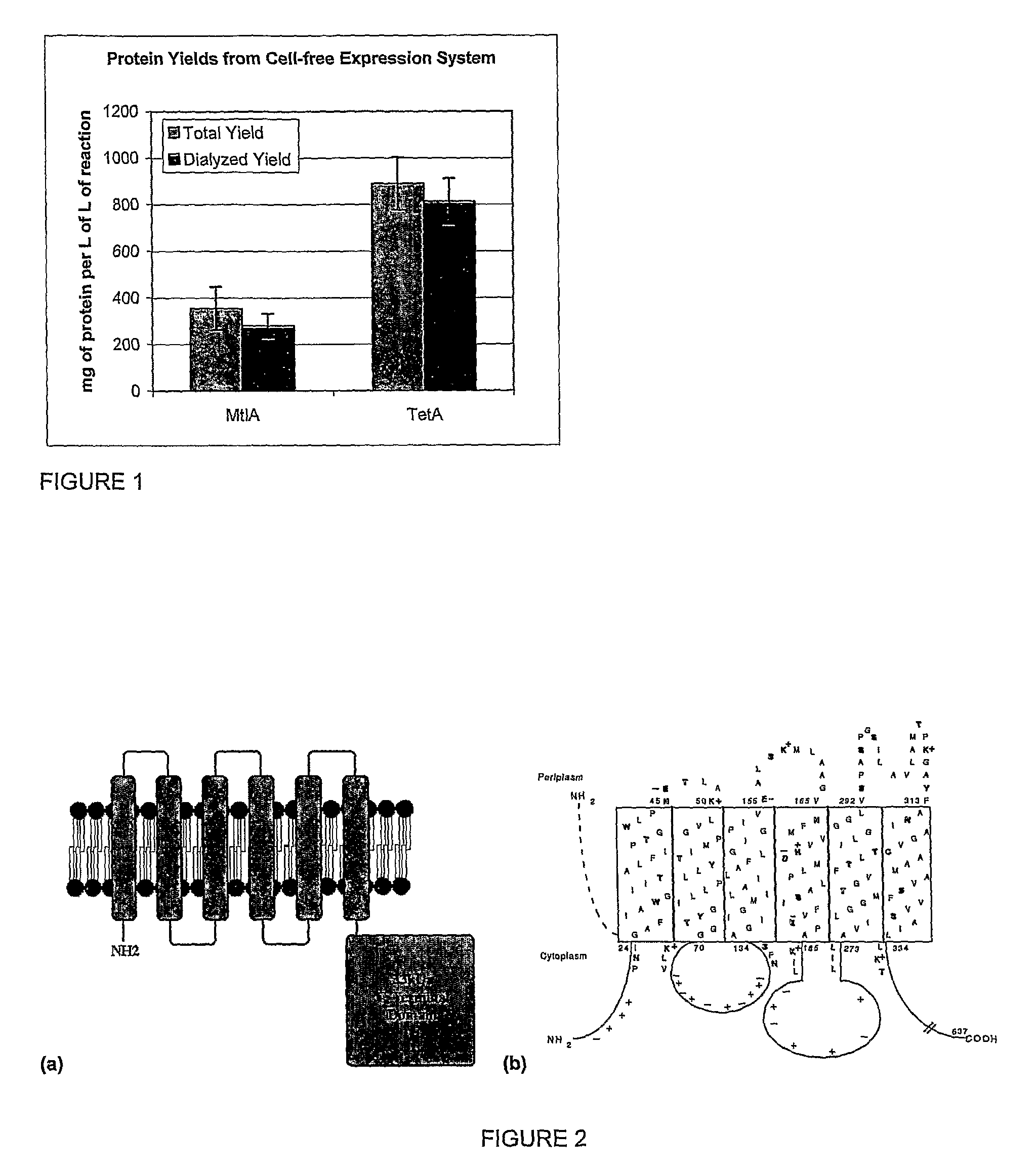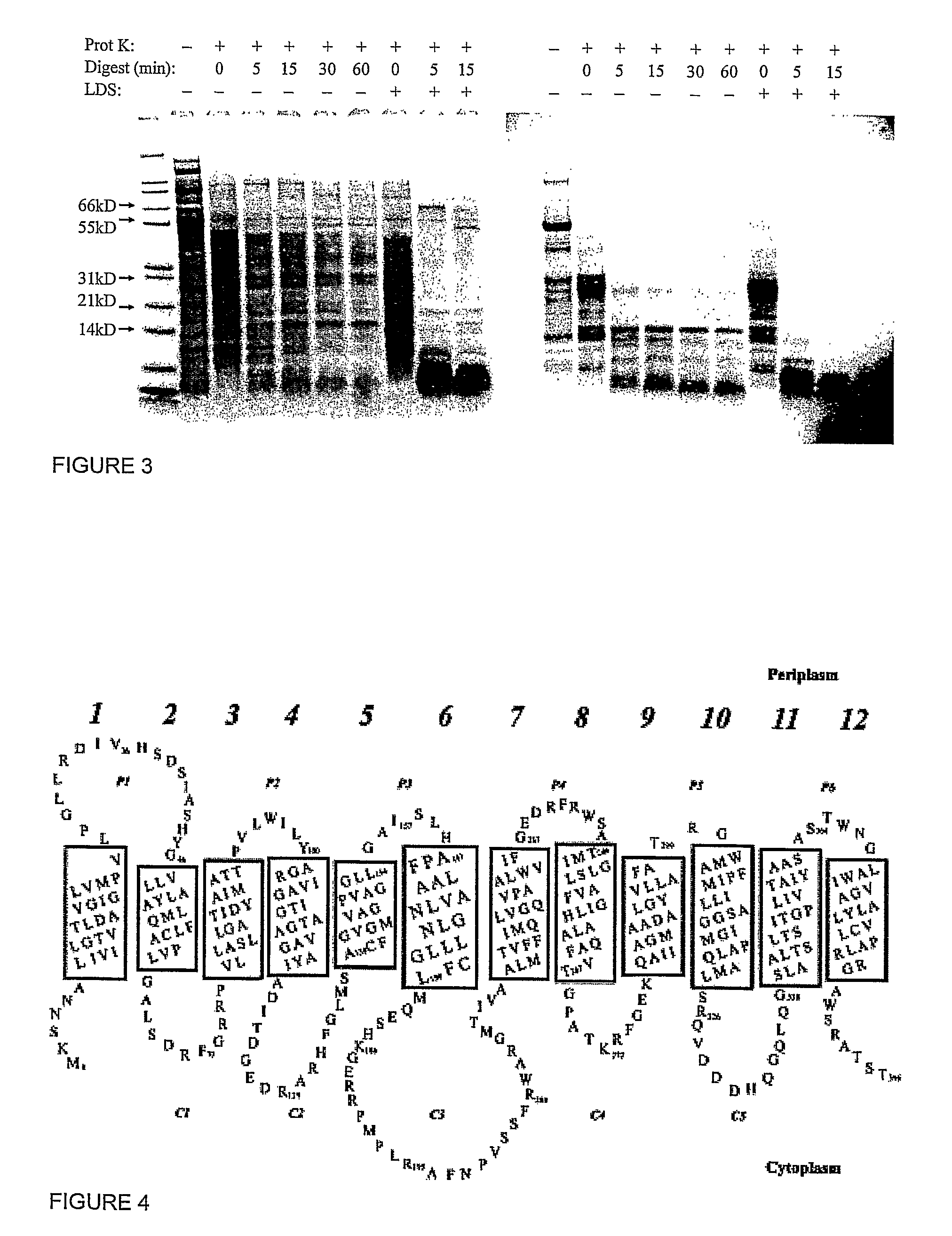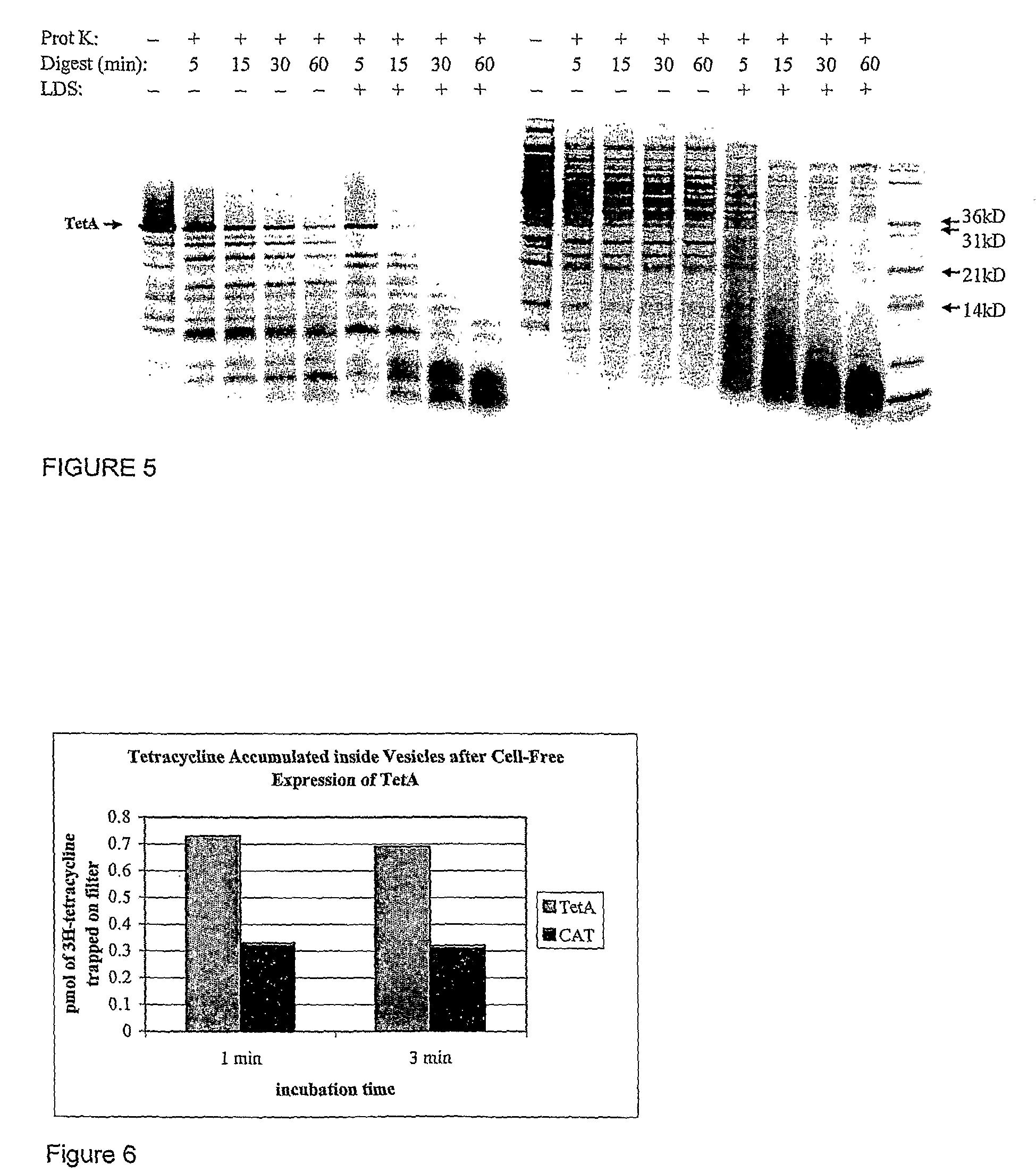Cell-free synthesis of membrane bound polypeptides
a cell-free, membrane-bound polypeptide technology, applied in the field of cell-free synthesis of membrane-bound polypeptides, can solve the problems of difficult purification and characterization of proteins, difficult utilization, and difficult to obtain, and achieve the effect of high yield of active proteins
- Summary
- Abstract
- Description
- Claims
- Application Information
AI Technical Summary
Benefits of technology
Problems solved by technology
Method used
Image
Examples
example 1
[0068]The protein synthesis reaction for these examples uses the CytoMim™ protocol described in WO 2004 / 016778, herein specifically incorporated by reference, with slight modifications. The components of this reaction include 13.3 μg / mL template plasmid, 1.2 mM AMP, 0.86 mM CMP, 0.86 mM GMP, 0.86 mM UMP, 34 μg / mL folinic acid, 170.6 μg / mL E. coli tRNA mixture, 2 mM each of 20 unlabeled amino acids, 0.33 mM nicotinamide adenine dinucleotide, 0.27 mM coenzyme A, 1 mM putrescine, 1.5 mM spermidine, 4 mM sodium oxalate, 1 mM dithiothreitol, 10 mM ammonium glutamate, 130 mM potassium glutamate, 8 mM magnesium glutamate, 10 mM potassium phosphate pH 7.2, 12 μM [14C]-leucine, 0.1 mg / mL T7 RNA polymerase, 0.24 volumes of E. coli S30 extract, and 0.41 volumes of vesicle solution (detailed below). T7 RNA polymerase is prepared as described by Grodberg and Dunn (J of Bacteriology, 170:1245-1253; 1988). E. coli S30 extract is prepared from the strain KC6 (A19 ΔtonA ΔtnaA ΔspeA ΔendA ΔsdaA ΔsdaB...
example 2
TetA Activity Assay
[0079]The TetA activity assay is performed similarly to that described in Yamaguchi, et al (1990) J Biol Chem, 265 (9): p. 4809-13. TetA is a proton-antiporter, catalyzing the transport of a metal-tetracycine complex out of the cytoplasm using the cell's natural proton gradient as the driving force.
[0080]To assay for TetA activity, a proton gradient is generated across the vesicle membrane by exposing the TetA-containing vesicles to 13.3 mM NADH at 37° C. for a fixed amount of time. The generated pH gradient is quantified using a self-quenching, pH-sensitive fluorescent dye, such as quinacrine (Yamaguchi et al., (1991) FEBS Lett, 282 (2): p. 415-8.) This dye is membrane permeable in its neutral state, but becomes protonated at low pH causing it to be preferentially trapped inside the vesicles after the gradient has been generated. Since the dye is self-quenching, the amount of dye trapped in the vesicles is indicated by a overall drop in fluorescence signal, there...
example 3
MtlA Activity Assay
[0083]Mannitol transport by MtlA is a PEP-driven process involving two other cytoplasmic enzymes, HPr (heat stable, histidyl phosphorylatable protein) and PTS Enzyme I. To assay for MtlA activity, the vesicles are preloaded with mannitol. This can be done either (a) by homogenizing cells in buffer containing mannitol during preparation of the vesicle solution before cell-free synthesis of MtlA or (b) by extruding MtlA-containing vesicles after the cell-free reaction in buffer containing mannitol. After a crude purification by dialysis in a 100 kDa MWCO dialysis bag, any residual HPr (9 kDa) or Enzyme I (63 kDa) carried over from the cell extract is removed.
[0084]Known amounts of purified HPr, Enzyme I, and PEP are added to the vesicles to initial transport of MtlA out of the vesicles. After incubation at 37° C. for specified time intervals, the vesicles are collected and washed using a 30 kD molecular weight centrifugal filter which separates vesicle-encapsulated ...
PUM
| Property | Measurement | Unit |
|---|---|---|
| concentration | aaaaa | aaaaa |
| concentration | aaaaa | aaaaa |
| concentration | aaaaa | aaaaa |
Abstract
Description
Claims
Application Information
 Login to View More
Login to View More - R&D
- Intellectual Property
- Life Sciences
- Materials
- Tech Scout
- Unparalleled Data Quality
- Higher Quality Content
- 60% Fewer Hallucinations
Browse by: Latest US Patents, China's latest patents, Technical Efficacy Thesaurus, Application Domain, Technology Topic, Popular Technical Reports.
© 2025 PatSnap. All rights reserved.Legal|Privacy policy|Modern Slavery Act Transparency Statement|Sitemap|About US| Contact US: help@patsnap.com



